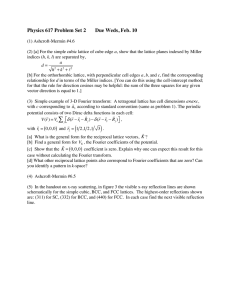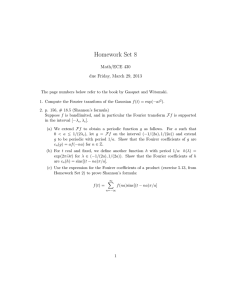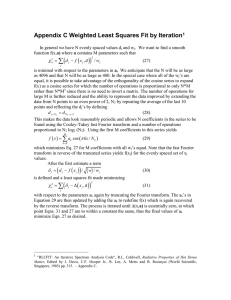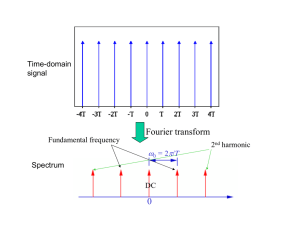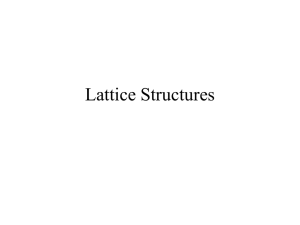Physics 489 Problem Set 2 Due Tuesday, Sept. 22
advertisement
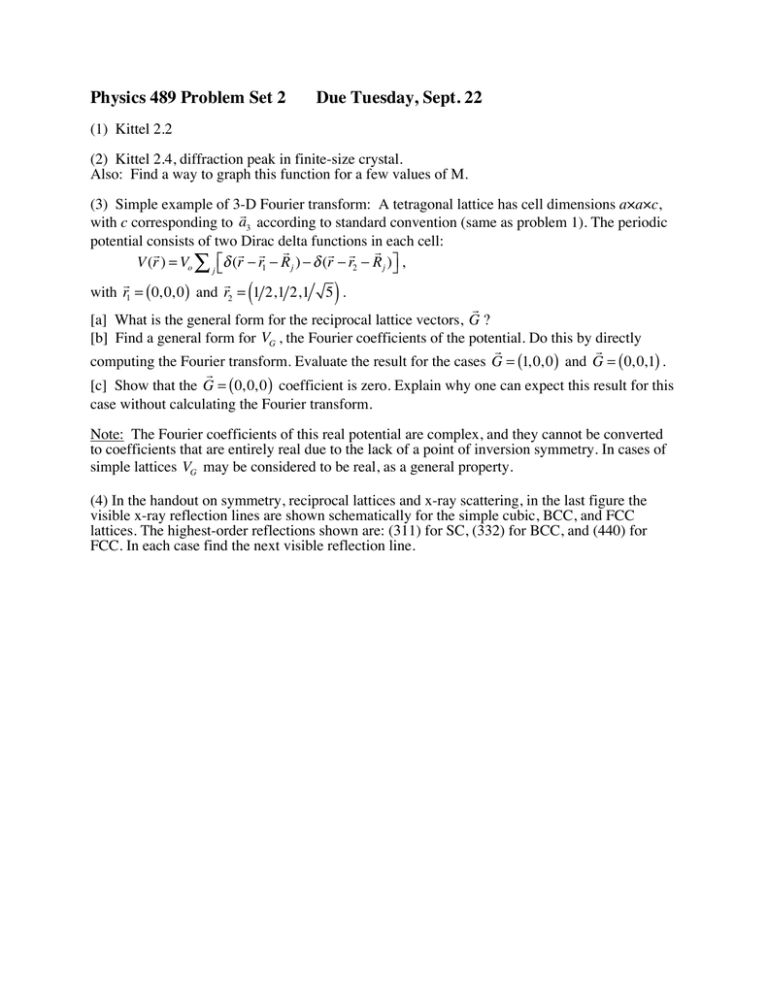
Physics 489 Problem Set 2 Due Tuesday, Sept. 22 (1) Kittel 2.2 (2) Kittel 2.4, diffraction peak in finite-size crystal. Also: Find a way to graph this function for a few values of M. (3) Simple example of 3-D Fourier transform: A tetragonal lattice has cell dimensions a×a×c, with c corresponding to a3 according to standard convention (same as problem 1). The periodic potential consists of two Dirac delta functions in each cell: V (r ) = Vo ∑ j ⎡⎣δ (r − r1 − R j ) − δ (r − r2 − R j )⎤⎦ , ! with r1 = ( 0, 0, 0 ) and r2 = 1 2,1 2,1 5 . [a] What is the general form for the reciprocal lattice vectors, G ? [b] Find a general form for VG , the Fourier coefficients of the potential. Do this by directly ! ! computing the Fourier transform. Evaluate the result for the cases G = (1, 0, 0 ) and G = ( 0, 0,1) . [c] Show that the G = ( 0, 0, 0 ) coefficient is zero. Explain why one can expect this result for this case without calculating the Fourier transform. ( ) Note: The Fourier coefficients of this real potential are complex, and they cannot be converted to coefficients that are entirely real due to the lack of a point of inversion symmetry. In cases of simple lattices VG may be considered to be real, as a general property. (4) In the handout on symmetry, reciprocal lattices and x-ray scattering, in the last figure the visible x-ray reflection lines are shown schematically for the simple cubic, BCC, and FCC lattices. The highest-order reflections shown are: (311) for SC, (332) for BCC, and (440) for FCC. In each case find the next visible reflection line.

